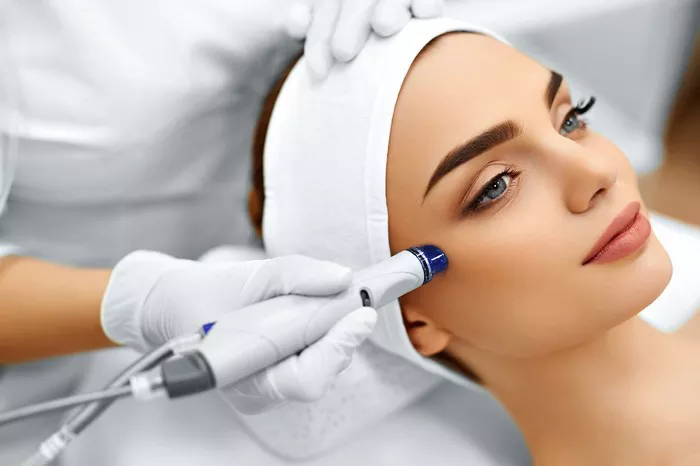Dermaplaning has gained popularity as a non-invasive exfoliation method that not only smoothens the skin but also addresses the presence of peach fuzz, the fine vellus hair on the face. As individuals explore the benefits of dermaplaning, questions arise about the regrowth of peach fuzz and its impact on the overall outcome. In this comprehensive guide, we delve into the science behind dermaplaning, exploring the intricacies of peach fuzz removal and the factors influencing regrowth.
Understanding Dermaplaning
Defining Dermaplaning:
Dermaplaning is a cosmetic procedure that involves the use of a sterile surgical scalpel to gently scrape away the top layer of dead skin cells and fine hair from the face. This process reveals smoother, brighter skin and is often performed by skincare professionals.
Mechanism of Action:
During dermaplaning, the surgical scalpel is skillfully maneuvered to exfoliate the skin’s surface and remove peach fuzz. The gentle scraping action not only addresses the superficial layer of dead skin cells but also eliminates the fine vellus hair, leading to a softer and more refined complexion.
The Myth of Thicker Regrowth
Dispelling the Myth:
One common concern associated with dermaplaning is the misconception that removing peach fuzz will result in thicker regrowth. However, this is a myth. Dermaplaning, when performed correctly, does not alter the structure or density of hair follicles. The regrowth remains consistent with the individual’s natural hair characteristics.
Understanding Vellus Hair:
Peach fuzz, classified as vellus hair, is naturally soft and fine. Unlike terminal hair, which is coarser and darker, vellus hair is not influenced by shaving or dermaplaning in a way that alters its inherent texture or thickness.
Factors Influencing Peach Fuzz Regrowth
Genetics and Hormonal Factors:
The regrowth of peach fuzz post-dermaplaning is primarily influenced by individual factors such as genetics and hormonal fluctuations. Genetic predispositions play a significant role in determining the texture, color, and density of hair, including peach fuzz.
Hormonal Changes: Pregnancy and Menopause:
Hormonal changes, such as those occurring during pregnancy or menopause, can impact hair growth patterns. Individuals may notice fluctuations in the appearance of peach fuzz due to hormonal shifts, independent of dermaplaning.
The Impact of Dermaplaning on Skin Texture
Exfoliation Benefits:
Beyond peach fuzz removal, dermaplaning provides notable exfoliation benefits. By eliminating dead skin cells, dermaplaning contributes to a smoother skin texture and a more radiant complexion. The procedure enhances the effectiveness of skincare products and makeup application.
Stimulating Collagen Production:
Dermaplaning’s exfoliation extends beyond surface benefits. The process stimulates the production of collagen, a crucial protein for skin elasticity and firmness. The renewed collagen contributes to a more youthful and vitalized appearance.
Post-Dermaplaning Care
Hydration and Sun Protection:
Optimizing the results of dermaplaning involves post-treatment care. Hydrating the skin and applying a broad-spectrum sunscreen are essential to protect the newly revealed skin and maintain the benefits of the procedure.
Gentle Skincare Regimen:
A gentle skincare regimen post-dermaplaning helps nurture the skin barrier. Avoiding harsh products and incorporating moisturizers and serums support the healing process and contribute to sustained skin health.
Frequency of Dermaplaning Sessions
Individual Preferences:
The frequency of dermaplaning sessions varies based on individual preferences and skincare goals. Some individuals opt for monthly sessions, while others choose a more sporadic approach. Consultation with a skincare professional can help determine an optimal schedule.
Combining with Other Procedures:
Dermaplaning can be combined with other cosmetic procedures, such as chemical peels or microdermabrasion, for a synergistic approach to skincare. Combining treatments is often tailored to address specific concerns and achieve comprehensive results.
Professional vs. At-Home Dermaplaning
Professional Expertise:
While at-home dermaplaning tools are available, professional dermaplaning sessions offer the advantage of safety and precision. Skilled professionals can navigate the facial contours effectively, minimizing the risk of cuts or uneven exfoliation.
Educational Resources for At-Home Users:
For those opting for at-home dermaplaning, educational resources and proper technique are crucial. Understanding the correct angle, pressure, and post-treatment care are essential for a safe and effective at-home dermaplaning experience.
Conclusion
In conclusion, the relationship between peach fuzz and dermaplaning is a dynamic interplay that yields radiant and smooth skin. Contrary to common myths, dermaplaning does not lead to thicker regrowth of peach fuzz. Instead, it offers a host of benefits, from exfoliation to collagen stimulation, contributing to a rejuvenated complexion. Understanding individual factors, post-treatment care, and the role of professionals in the dermaplaning process empowers individuals to embrace the radiance of smooth and revitalized skin.


